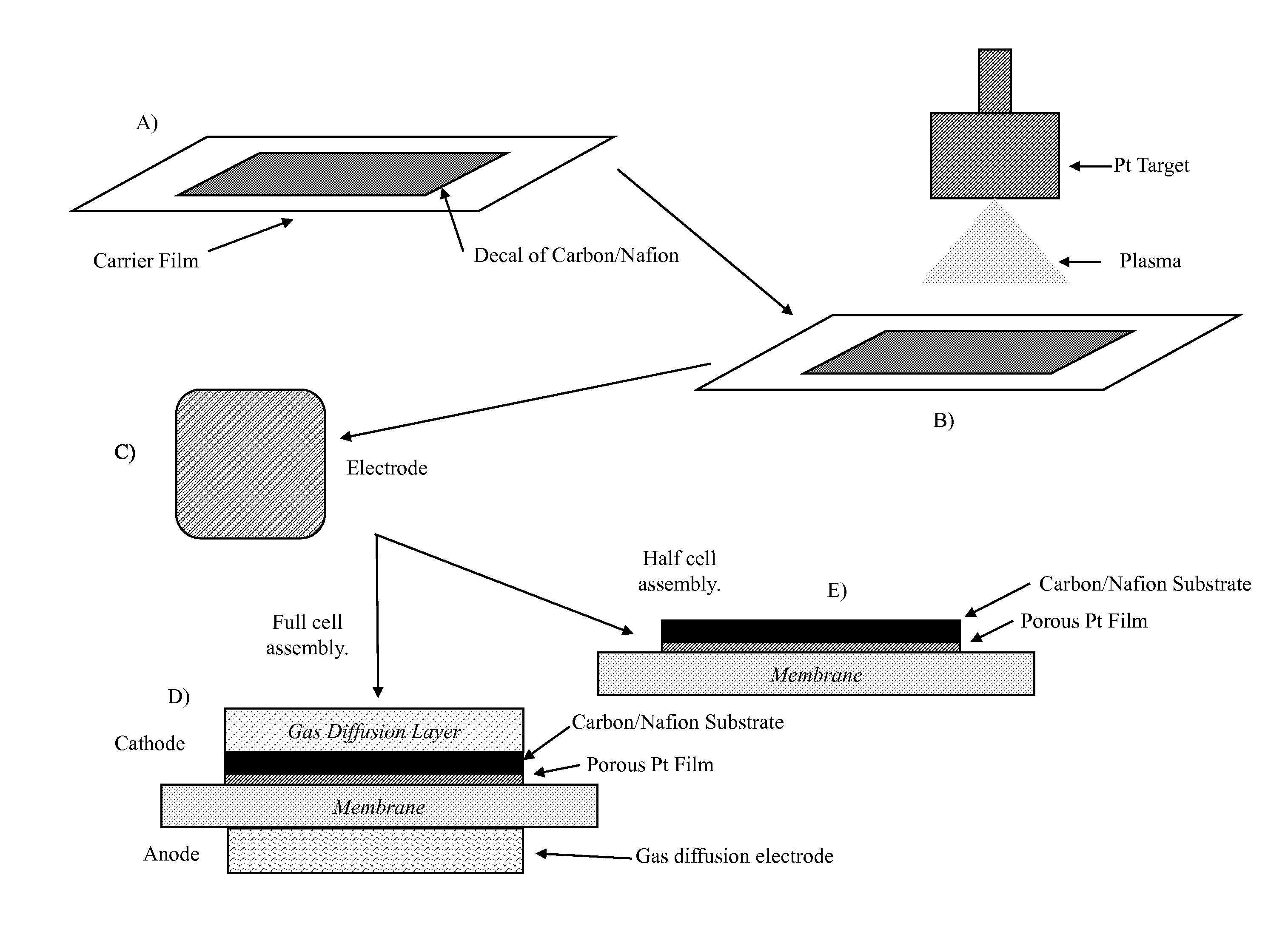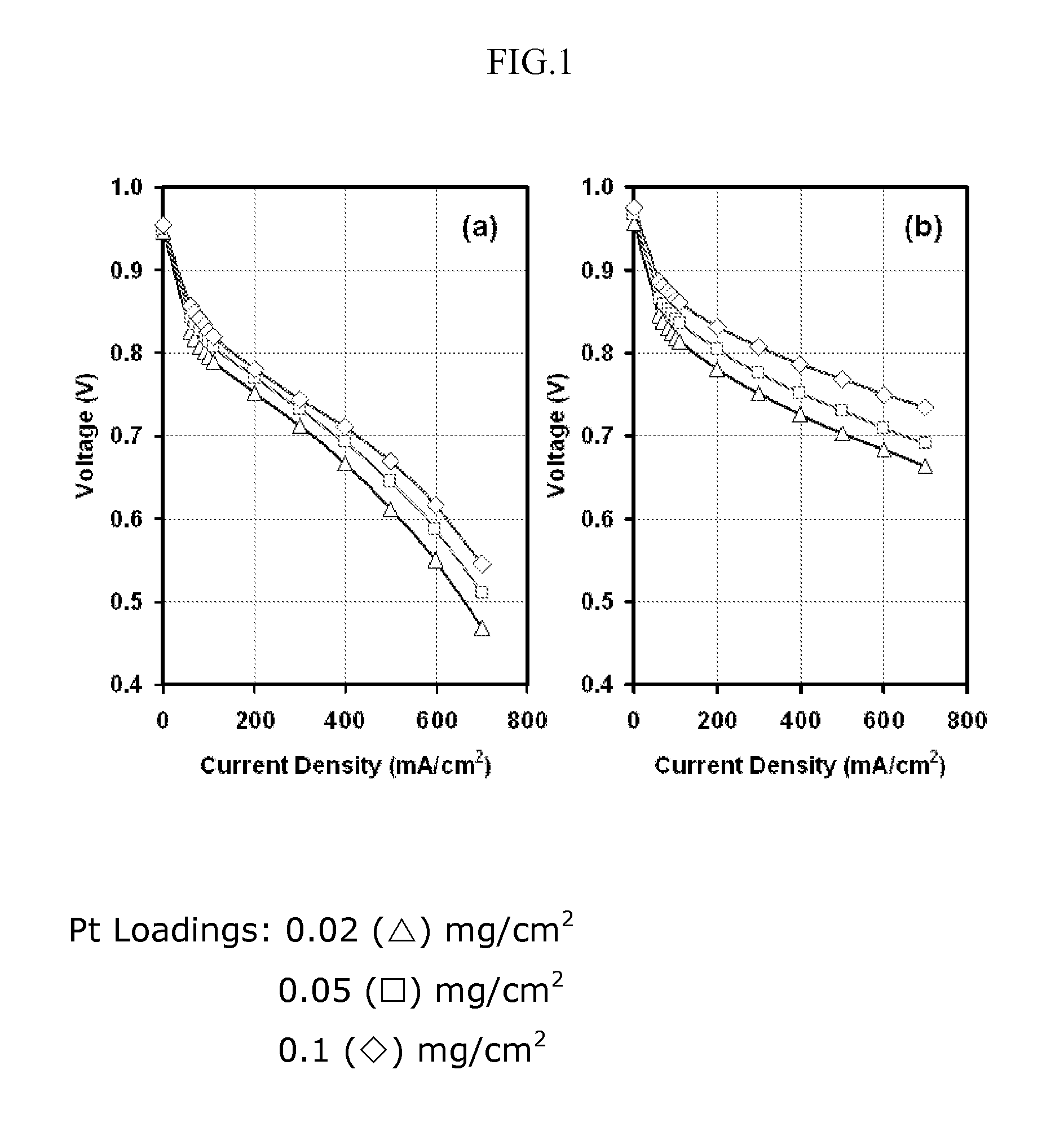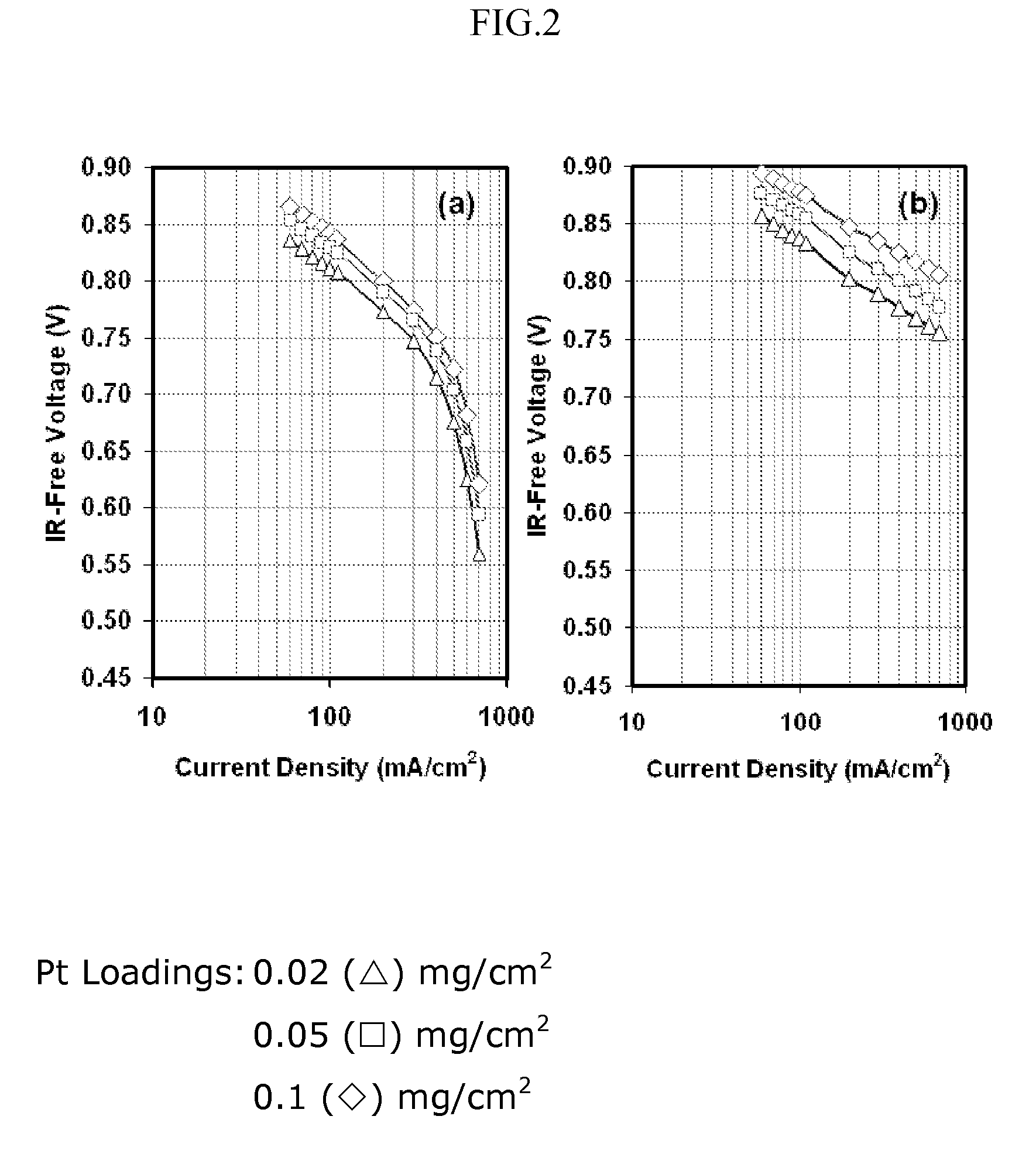Fuel Cells with Sputter Deposited Pt and Pt Alloy Electrodes
a technology of pt alloy and fuel cells, which is applied in the field of preparing a membrane thin film electrode assembly, can solve the problems of inability to achieve large-scale implementation of pemfcs, performance loss, and extremely time-consuming development of traditional carbon supported alloy nanoparticles
- Summary
- Abstract
- Description
- Claims
- Application Information
AI Technical Summary
Benefits of technology
Problems solved by technology
Method used
Image
Examples
examples
Experimental Procedure
1. Preparation of Carbon / Nafion® Decals
[0038]Carbon / Nafion® decal were made by casting carbon / Nafion® ink onto silicone coated Mylar® using a K Paint Applicator (R K Print Coat Instruments Ltd.). The carbon / Nafion® ink was formulated by mixing Vulcan XC72R carbon (Cabot), diluted Nafion® (5 wt %, Aldrich), and 1-propanol (Fisher) to achieve a carbon to Nafion® ratio of 4 to 1 by weight in the dry decal. The decal was dried under ambient conditions and the final thickness was about 10 μm.
2. Deposition of Catalyst Films
[0039]Thin catalyst films were deposited onto the exposed surface of the decals prepared above by using a Kurt J. Lesker CMS-18 physical vapor deposition system at relatively high pressure (75 mTorr Ar) and at low target powers to enhance film porosity. The substrate was rotated to achieve good film thickness uniformity and all depositions were performed at room temperature.
[0040]For pure platinum cathode electrocatalyst films, the platinum target ...
PUM
| Property | Measurement | Unit |
|---|---|---|
| pressures | aaaaa | aaaaa |
| pressures | aaaaa | aaaaa |
| pressures | aaaaa | aaaaa |
Abstract
Description
Claims
Application Information
 Login to View More
Login to View More - R&D
- Intellectual Property
- Life Sciences
- Materials
- Tech Scout
- Unparalleled Data Quality
- Higher Quality Content
- 60% Fewer Hallucinations
Browse by: Latest US Patents, China's latest patents, Technical Efficacy Thesaurus, Application Domain, Technology Topic, Popular Technical Reports.
© 2025 PatSnap. All rights reserved.Legal|Privacy policy|Modern Slavery Act Transparency Statement|Sitemap|About US| Contact US: help@patsnap.com



